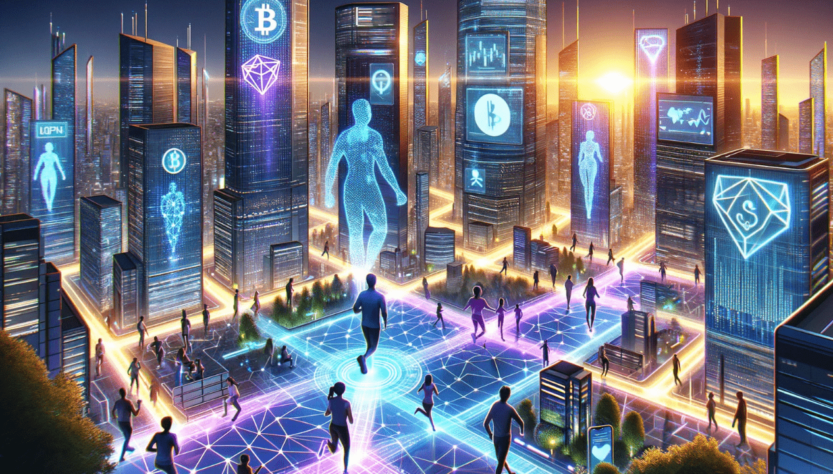Web3 principles are changing the way we act and interact with data in the digital world across a wide range of sectors, from finance, art, supply chains, governance and healthcare to gaming.
No matter the industry, Web3 shifts traditionally centralized systems toward more decentralized, user-centered, and open structures. No more centralized platforms and services controlled by a few large corporations.
In this article, we look at how Web3 influences the gaming industry and what exactly Web3 games are, often called blockchain games or decentralized games.
Understanding Web3
Before we look at how Web3 games integrate the basic principles of Web3, let’s refresh our memory.
What are some of the main principles of Web3?
Decentralization
With the goal of reducing centralization, Web3 is defined by distributing control and authority across a network of nodes or participants. This decentralization is often achieved through blockchain technology and peer-to-peer networks.
Ownership and control
Users have greater ownership and control over their identities, data, and digital assets. They have control over the sharing and use of their information, which lessens the influence of centralized organizations.
Sovereign identity
Autonomous identity systems allow people to manage and share personal information without relying on centralized authorities. Users regain control over their digital identities.
Transparency
Web3 attaches great importance to transparency in transactions, data management and governance. Blockchain’s public ledger ensures that anyone can verify transactions and actions on the network.
Community governance
Community-driven governance models, where users and stakeholders have a voice in decision-making, help promote equity and inclusion.
Security and privacy
With a strong emphasis on security and privacy, Web3 often relies on cryptographic methods to protect user data and transactions.
What are Web3 games?
Web3 games integrate the core principles of Web3 and blockchain development companies deliver a decentralized, innovative, and player-oriented gaming experience.
What does this mean?
To give players more control over the game, Web3 or blockchain games incorporate technologies such as non-fungible tokens (NFTs), blockchain-based assets, decentralized ownership, and often cryptocurrencies.
Blockchain games are defined by having game assets owned by players in player escrow wallets in the form of NFTs.
Released in 2017, the first example of a Web3 game was CryptoKitties, where players collected and raised unique virtual cats as NFTs. One of the most famous Web3 games is Axie Infinity, which is a money-making game where players can collect and fight fantasy creatures called Axies.
10 Key Features of Web3 Games
We have established that Web3 games can offer an immersive experience that is simply not possible in traditional games. But what features make it possible?
Blockchain Integration: To store and manage assets, transactions, and other game-related data, Web3 games leverage blockchain technology. This integration guarantees transparency, security and immutability of actions within the game.
NFTs: NFTs are unique digital assets that can represent ownership of virtual in-game items, characters, skins, or other collectibles. Each NFT is different and cannot be replicated, and ownership is recorded on the blockchain, creating scarcity.
True ownership: Web3 games give players true ownership of game assets. Players have full control over their assets, which can be transferred between games or traded on external markets. This is the opposite of traditional games where the game assets are owned by the game publisher.
Play to Earn: By requiring players to actively participate in the game, certain Web3 games use play to earn mechanics that let them earn cryptocurrency or other rewards. This may include completing quests, winning battles, or contributing to the game’s ecosystem.
Decentralized Governance: A few Web3 games use models of decentralized governance, in which players influence the course and evolution of the game. Decisions are often made through token-based voting systems, ensuring a more democratic and community-driven approach.
Interoperability: Games on the Web3 ecosystem are intended to work with other games and platforms. Players can carry assets and progress in different games, improving the user experience and increasing the usefulness of the assets.
Cryptocurrency Integration: Many Web3 gaming companies incorporate cryptocurrencies or tokens for in-game transactions, rewards, and monetization. These tokens can often be traded on cryptocurrency exchanges, potentially providing real value to players.
User-controlled economies: Web3 games allow players to shape in-game economies by determining the value of assets and participating in player-driven markets. This can lead to unique and dynamic game economies.
Digital Collectibles: Players can collect and display NFT-based digital collectibles, which can include anything from virtual pets and weapons to virtual real estate and art. These collectibles have real-world value and can be traded or sold.
Community Engagement: Web3 games often foster strong player communities, as players are more deeply involved in the success and direction of the game. This can lead to vibrant social interactions and collaborations in the game.
